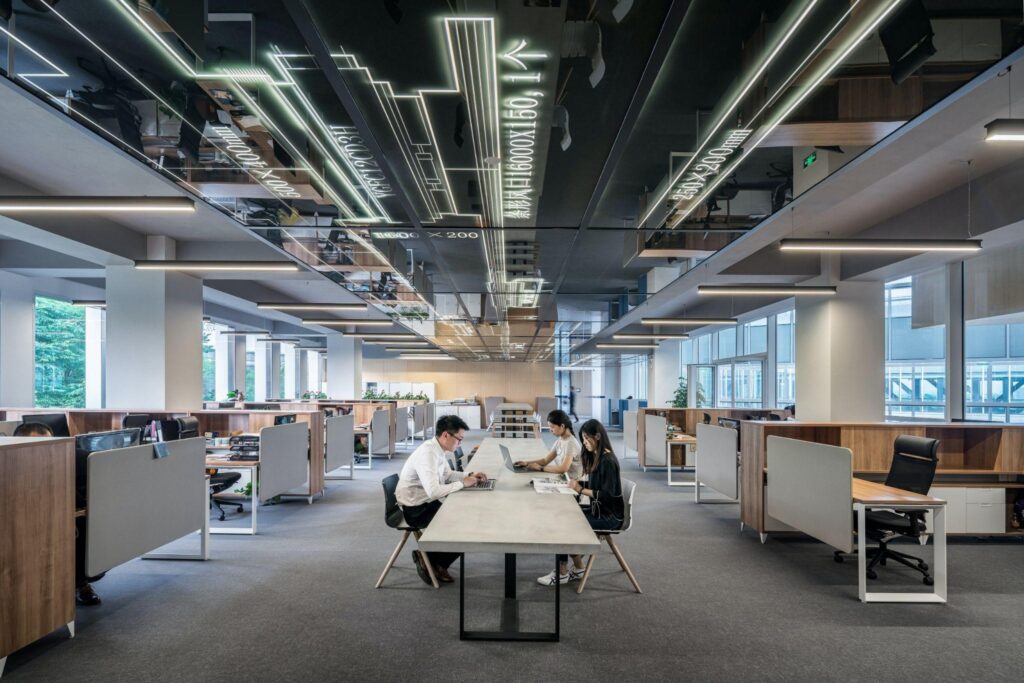Today’s hectic digital world has allowed technology to invade virtually every aspect of our lives, including work. Smart workplace settings, which are filled with multiple connected gadgets, claim to increase productivity and efficiency. Have you considered the possible influence of these technologies on your health? This essay will go into the fascinating world of smart office environments, including both the benefits and potential drawbacks. So take a seat, put on your reading glasses, and let’s go on this educational journey.
The Rise Of Intelligent Workplaces
Because of the latest developments, smart offices are becoming a regular element in many firms. Intelligent lighting, automated climate control, and IoT (Internet of Things) devices are just a few of the cutting-edge innovations available in these venues. Are there any unforeseen health repercussions of making the workplace more productive and comfortable for workers?
The Effect On Worker Health
Sedentary Lifestyle: One of the key concerns is the prevalence of sedentary labor in modern office environments. Workers regularly spend hours hunched over computers, which can lead to a variety of health issues such as weight gain and back pain. Prolonged screen gazing can cause digital eye strain, often known as computer vision syndrome. Symptoms include dry eyes, headaches, and visual fuzz.
While smart gadgets may boost productivity at work, they can also generate stress and burnout since users are always required to be online and respond to communications.
Noise Pollution: When smart technology is mixed with open office designs, increased noise levels might occur, which can be distracting and uncomfortable for employees.
Mini split units, which are a popular choice for climate control in smart offices, may have a significant impact on indoor air quality. These devices provide great cooling, but frequent maintenance is required to prevent allergens and pollutants from spreading in the air.

Mini Split Units: Mini split units are ductless heating and cooling systems that allow exact temperature control in distinct zones. They are an excellent choice for modern offices since they are both silent and energy-efficient.
Managing Risks And Benefits: A Fine Balance
There is little doubt that smart office environments offer several advantages, including better cooperation and energy savings. Here are some strategies to consider to ensure that the benefits outweigh the possible health risks:
Ergonomic Workspace: Purchase ergonomic furniture and train employees to sit up straight to reduce the chance of musculoskeletal disorders.
Screen Breaks: Encourage regular screen breaks to reduce eye fatigue. The 20-20-20 rule states that you should only look at items 20 feet away for 20 seconds every 20 minutes. It is a simple yet powerful notion. Encourage the use of mindfulness practices to help employees manage stress. Consider providing spaces of calm and quiet for thought or relaxation.
Noise Control: Use noise-canceling headphones and acoustic panels to create a calmer and easier-to-concentrate environment.
Micro Split Maintenance: preserve that micro split units are properly maintained and cleaned on a regular basis to preserve interior air quality.
Sustainability Is Important
When pursuing technological advancements, it is critical to consider how smart office environments influence the environment. Many of these products use energy and generate electronic waste when they are replaced. Businesses should prioritize sustainability by implementing recycling programs, purchasing energy-efficient equipment, and considering the environmental effect of technology decisions.

A sustainable approach not only promotes a better working environment for employees, but it also ensures a future in which everyone is more ecologically conscious. Let us now look at the future prospects for smart office environments.
Future Workplaces With Integrated Environments
Looking ahead, technological improvements will undoubtedly have a huge effect on how smart working environments evolve. We should expect to see more AI-powered systems that adapt to each employee’s preferences, enhancing both comfort and efficiency. Augmented reality (AR) and virtual reality (VR) technologies will most likely become mainstream tools for remote collaboration, allowing teams to work uninterrupted from anywhere in the globe.
In addition, the continuing improvement of sensor and IoT technologies will allow for a deeper understanding of employee well-being. Businesses may use these sensors to proactively address health concerns by monitoring things like air quality, noise levels, and even individual biometrics. However, due to the increasing connectivity, data security, and privacy problems will remain critical, necessitating robust cybersecurity measures.

The smart workplace of the future may eventually be a dynamic and responsive environment that emphasizes its users’ well-being and health in addition to increasing productivity. In this world where technology and wellness coexist, the line between work and wellness is becoming increasingly blurred.
To Read More Tech Blogs Visit: Technical Nick

















